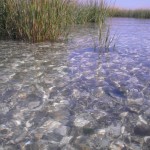Oyster Restoration In Jamaica Bay
Currently the Ecowatchers are working on a collaborative effort with The National Parks Service and Stony Brook University to explore the possibility of restoring oysters to Jamaica Bay. Oysters were once a mainstay of Jamaica Bay where they were harvested for consumption. They existed in large amounts as reefs throughout the waters of the Bay. With an ability to filter up to 40 gallons of water per day (each oyster) they played a large role in helping to keep the waters of the bay clean. In addition the oyster reefs provided home to dozens of species of fish and crabs and were an integral part of the ecosystem of the bay. Oysters started to die off in the early 1900’s from exposure to sewage as there were no sewage treatment plants and waste was deposited directly into the bay and adjacent waters. Over the years the waste water treatment plants have made tremendous improvements and the waters have cleaned up to the point of once again being able to sustain oyster growth. Recent studies conducted by Professor Jeffrey Levington, of Stony Brook University, have confirmed this. Professor Levington’s project had surprising results in that the data showed that the oysters placed in Jamaica Bay actually grew at rates faster than areas such as Shelter Island (used as a comparison site). The project has moved from small cages to larger cages and additional sites in an effort to see if the oysters will not only survive but reproduce. The Ecowatchers have assisted in procuring $100,000 in funding from Florida Power and Light who had agreed to help assist in an environmental project within the Bay. In addition the Ecowatchers have provided local technical knowledge pertaining to sites of oyster shell “islands”, tide flows, and water salinity and oxygen content. The group provided boat transportation for “spat “ studies as well as to place the oyster cages in sub tidal locations. This required that the Ecowatchers use members who are certified scuba divers to place and fill the cages with weights, substrate and oysters. Hopes are high that we can move to the next phase which would be full blown oyster reefs placed in designated locations throughout the bay. We will have a better understanding of this possibility as the data is collected this Spring and Summer from these sites.











![Blackberry_pics_235[1]](http://jamaicabayecowatchers.org/wp-content/uploads/2011/01/Blackberry_pics_2351-150x150.jpg)